When it comes to guns, many firearm enthusiasts prefer to include optical sighting devices on them, not just on rifles, but handguns and shotguns as well. One reason for this is simplicity. That’s because by aiming through A RED DOT SIGHT or scope, you completely eliminate ta 1/3 of the complexity that comes with lining up (Iron Sights).
1. Why Should Buy the Rifle Best Scope
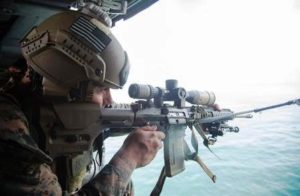
With Metallic Sights, you’ll need to line up the rear sight with your target and the front sight.
With a scope, you’ll only have to line up your (reticle) crosshairs with the target. It’s easier for you to learn how to shoot using a scope than with iron sights.
Since many scopes have magnifying abilities, your target appears closer, meaning you’ll find it easier to see it.
You can make a more precise shot on the target. Individuals with problems in their vision can adjust the reticle focus, which is at the eyepiece (ocular) for their eyes.
Thus enabling them to get a clear and crisp sight picture.
Remember that older eyes may find it impossible or difficult to switch their focus to a front sight from rear sight to a target as needed without a scope, which is one frustrating thing. However, by having a scope, you’ll avoid this problem.
2. The Right Tool for the Job
Every year, Magnumitis sinks its claws into large numbers of hunters. Scopes and cartridges are getting more powerful with each passing year. Many uninformed users often utilize these combinations for hunting whitetail deer, where almost all shots are under a hundred yards.
Powerful scopes and magnum cartridges account for more wounded games and missed games than appropriate scopes with standard loads. You should realize that more doesn’t mean you’ll shoot any farther. Optics will magnify more and bullets will go faster since they sell.
Depending on what people want, manufacturers will ensure you get your choices. That means you need to ensure you use the right tool for the job. The reason is if people want square main tubes or pink scopes, manufacturers will design them, which is fine, but you won’t get the desired results.
What scope do you need for hunting?
A typical deer rifle used to feature a 3-9 scope, and it was for good reason. Three power is low enough and with an adequate exit pupil along with the field of view for close shots in a majority of applications. For longer shots, nine power provides excellent magnification.
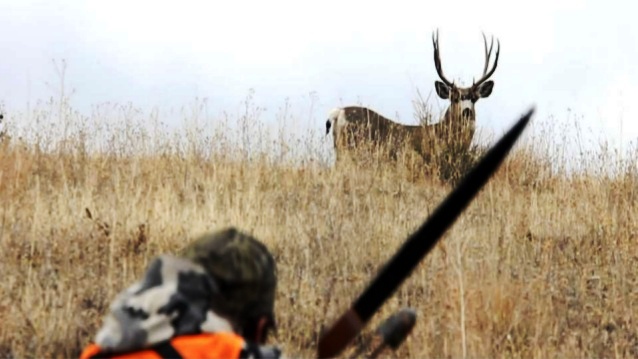
However, many people now want to select scopes with top magnifications for whitetail deer. They include fourteen, twenty, or even more, which is more often a mistake.
Remember that less is more. Whistles and bells, similar to giant turrets, bubble levels, and lighted reticles, are in most cases a waste, especially when it comes to budget-friendly offerings.
To help you have more choices of the best scope for hunting, we have compiled all the results in the article Best Hunting Scope
If you have them in scope, what you’ll get is a less reliable, less usable, and more complicated product.
You have enough work to do, which means you want an easy-to-use scope. The best scopes have quality features, which you can rely on.
Higher magnification subtracts from the available light and from your exit pupil size. On the other hand, the lower end of a scope (high magnification) is too much for you to take an extremely close shot. On a whitetail rifle, the scope should always be kept at the lowest power.
If the power happens to be 5 or 6, in many instances the deer, which is only yards away, will appear as one hairy patch on the scope. If the field of view is narrow, you can’t find him or her and if it’s dark, you can’t figure him out.
It’s important you know how low the scope goes, and not how high, which is what Navy pilots do. In most instances, low is important since you can always shoot with low power or have the time to turn your scope up.
However, you can’t use higher power to shoot close since the field of view (FOV) and the exit pupil is small. We may be getting ahead in our descriptions but will look into them as we go on.
3. The Numbers
In the case that you’re using a 3-9X40 scope, it means 3X or three power. That means the image you’ll view through the scope will appear three times (3X) closer than it could have appeared if you used your naked eye.
The 9 refers to nine power, or (9X) nine times closer it looks than it will appear with your naked eye.
The (40) forty is the diameter of the objective lens in millimeters. It’s a variable scope since it gives you the ability to vary its magnification from three to nine and stop anywhere between.
You can describe the scope as a “three to nine by forty”. Some types of scopes provide you with a 3x magnification range, for example. 3-9. On the other hand, some offer you more such as 4-12.
For some new scopes, the magnification range is available at 8x or more. What you should realize is that you’ll have to pay more for a scope that comes with a larger magnification range since they are more versatile. It’s the reason that many users prefer them.
Many scopes, for example, those in the United States come with main tubes, which measure one inch in diameter. It means they utilize one-inch rings. Some scopes have main tubes measuring thirty millimeters, meaning they use thirty-millimeter rings. You can use many types of bases to connect rings to a firearm.
You need to make sure you know the type of base you have in order to find out the exact kind of thirty or once-inch millimeter rings you’ll use for your type of scope.
The objective lens diameter determines the height of the rings you need, in addition to the ocular bell diameter, bolt lift, action type and size, and barrel thickness. For choosing mounts, bases, and rings, check out this article of mine.
4. Light Transmission and Eye Relief
Keep in mind that scopes do not gather light, even if the term “light-gathering ability” is commonly used. What happens is that the scope transmits any available light to your eye through the lenses, while lowering a bit in the process. Only the very best and most expensive scopes can offer you a light transmission of almost 98%.
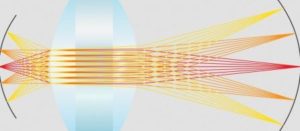
That means anything that’s above 95% is considered to be among the best, and most scopes offer you around 90%, take or give a bit.
Make sure you accept light transition figures only after reading the best reviews.
That’s because manufacturers use various means to measure light transmission, and at times, some wavelengths will boost their numbers.
The more magnification a device offers you, the less light your eyepieces will get. If the objective lens is large, you’ll get more from your eyepiece.
Younger eyes can open up to seven millimeters or more, while aged eyes can only dilate to around four millimeters. If the exit pupil is larger than your eye can use, it’s a waste.
The exit pupil refers to the small circle of light, which appears when you hold your scope at arm’s length. For example, take your variable scope and then put it at its lowest power. You should then hold it at arm’s length. In the ocular lens, the circle of light is the exit pupil.
The diameter of the circle of light in millimeters is the size of the pupil size. You can turn your scope up, to its highest power and try the process again.
You’ll realize it gets smaller. In the event that you’re using the scope when lighting conditions are poor, for example, when hunting expeditions at dusk or dawn, will you be able to see well through such a small cycle of light? How dark and small will the exit pupil be?
The exit pupil’s formula is as follows: divide the objective lens size into millimeters by its magnification. For instance, if the 3-9X40 scope is set at 3X, you should divide the 40 by 3 equals, meaning it will be 13.3 millimeters.
It’s large enough for most low-light scenarios. If the scope is set 9X, you should divide the 40 by 9 equals, making it 4.44 millimeters. This difference in the light available from the (LARGER) EXIT PUPIL is large.
If the exit pupil is larger, it means your head’s position will be less critical in relation to your scope. Eye relief is the distance that your eye should be to the device’s ocular lens to get a clear and full picture. Scopes that are lower powered will have a longer range of distance, which is available for a full view.
High-powered devices are sometimes important in regards to centering your eye through the tube’s middle, and the distance your eye should be from the device’s ocular lens.
At times, you only have a half inch farther or closer you may be able to view the whole scenario.
For a standard riflescope, the current largest eye relief available is about four inches, which is great since it offers adequate room for the gun to recoil while avoiding hitting your face, that’s if you do the job well. The majority of standard riflescopes are between 3 and 3 1/2 inches.
Higher recoiling guns, which include slug guns, need lots of eye relief to avoid the ” scope eye” or the cut that some individuals get as a result of the scope’s ocular lens coming back (Under Recoil) and then cutting a gash (semicircular)above the user’s eye. Some dangerous game scopes, muzzleloaders, and shotguns at times have 5 or 6 inches of eye relief to avoid scope eye. However, it’s often at the expense of the field of view.
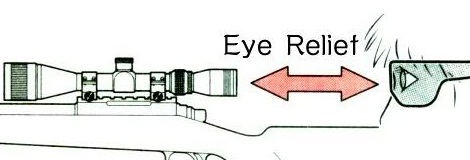
“Scout scopes” or (Intermediate Eye Relief) IER scopes get mounted in front of a long gun’s receiver and need around 9-12 inches of eye relief. “Pistol scopes” or LER (Long Eye Relief) scopes, which are used on handguns, have an eye relief of around 16-20 inches.
When you’re mounting a scope, ensure it’s at the highest power and in a position that your neck and head are comfortable. You should position your head on the stock of the position, which you’ll be shooting at most.
For example, if you see your gun while shooting off a bench rest, your head will tend to sneak up on your stock a bit.
If you use this gun for snap-shooting deer in the woods, your eye relief may not be the best or optimal, nor your sight picture. That means you should always mount the scope so that you won’t have to move your head to get an optimal field of view. Move your scope to your eye, not your eyes to the scope.
5. How To Use And Change The Scope’s Magnification Range
First, for you to know how to change the magnification of the scope, you must know How to mount a scope
As mentioned before, a scope that offers you a magnification range of 3-9 for a device such as a whitetail deer gun is quite a standard.
In the Western states for antelope or mule deer, a 4.4-14 or 4-12 isn’t too much, for instance, if the user’s average shots are as many times as it can be in the Eastern Whitetail woods. If you are in an open country or on the plains, you can choose to leave the scope at a higher power.
You will, in most instances, have a good view around you, with little chance of a hunt or animal surprising you, which they do sometimes.
On other occasions, you may have to shoot from a hilltop to another or mountain-to-mountain. Scopes that provide you with this magnification range are perfect for other activities such as target shooting.
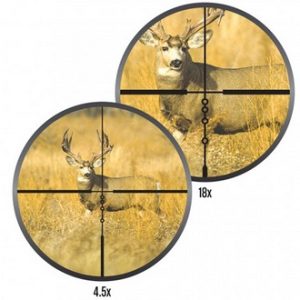
On the other hand, an 8-25X or 6-20X variable scope won’t provide you with adequate power if you’re looking forward to target shooting or for prairie dogs.
You should also realize that during hot days, heat waves and mirages could make even high-power scopes almost unusable.
Due to their fewer moving parts and simplicity, some users opt for fixed power scopes. On some specific rifles, you may like nothing more than a fixed 4X. Many .22s for plinking and squirrel rifles are excellently equipped with this magnification.
Some target shooters prefer to use fixed power scopes that have a high magnification of 24, 36, 40 or higher.
For a handgun that has a magnified scope, a 2X scope is the most common choice. Remember that if you have more magnification, you will find it harder to find your target and sight picture, which means that your eye relief will become closer and more critical.
If you’re handling anything above 2X, you should remember that you’ll need lots of practice if you’re going to shoot with a handgun with a scope. Scopes with a high-powered variable are really meant for an experienced shooter and are mostly used from a rested position.
Muzzleloaders and shotgun scopes will in most cases have lower power scopes meant for deer hunting (short range) with slugs and for turkey.
Again you’ll find the 2X to be the standard, but the trend is for the 2-7 variable power or even 3-9 scopes. Muzzleloaders and sabot slugs fly much flatter and faster than the Maxi Balls and Foster-type slugs, which they replaced not too long ago.
These new projectile types ensure that shots that were way out of range in the past two decades very possible now. Parallax will in most cases be factory set at 50, 60, or 75 yards. Muzzleloader and shotgun scopes come with a generally maximum (available) eye relief to avoid or prevent the “scope eye.”
6. Parallax
Most people find it hard to understand parallax. The best way to explain it is to imagine the following scenario: The majority of riflescopes that have a medium to high (variable) power range, for example, 10X or slightly higher, that often do not have PARALLAX ADJUSTMENTS (external) are parallax corrected at either 150 or 100 yards. You should proceed and take one of these scopes, set it at 100 yards, and then put it in high power vise.
Center the crosshairs on a bull’s eye, that is on a target at 25 yards. Then move your head in a small manner off the center to the right and left or down or up. What you’ll see is the crosshairs moving off the bull eye, that’s even though the scope hasn’t moved. The scope’s “eye” isn’t focused at the proper distance. It will also happen if the target is set at a further distance, for example, 300 yards.
You can also look at it this way: proceed and put one small mark from a pencil on your table. You should then put an inch of water in a drinking glass, which is clear.
Hold the glass at an inch over the mark and ensure you move it around slightly in different directions. Looking down in your glass, you should watch the dot move in directions, which are other than where it should ideally be.
External parallax adjustments, which are referred to as side focuses or adjustable objectives, are usually on scopes that have more than 10 power or on other scopes which are used at close distances.
In recent times, it has become common to install parallax adjustment dials to the left of the turret housing. It’s more user-friendly and convenient, meaning it will become even more common.
Even for targets within 10 meters, airgun scopes will have, at times, a high power of 18 or even more. A bad parallax setting can not only look out of focus but also ruin your group images, even though your shooting may be technically excellent.
If you’re hunting game, an error in parallax won’t be as significant as the movement your breathing or heartbeat will cause. If you need to adjust something, you should realize that you’ll have another thing to worry about, that is using precious time and perhaps having a hurried shot or missed one.
You aren’t parallax-free just for the simple reason that you’re getting a clear picture.
Recently, someone inquired if they could get clear pictures through 2X handgun scopes at the 12-foot distance that they shoot their air pistol in their houses.
We went into the warehouse and checked out several varying brands. The answer to them was positive, a clear picture. However, by nodding our heads even slightly, the crosshairs moved some inches off our targets.
It means that these scopes can be practically unusable at that particular distance. If you only looked directly through your scope’s center at the same time, parallax wouldn’t be an issue.
However, it’s only a robot that can do that, not a human being.
Generally, you won’t need adjustable objectives for hunting scopes that are under 10 or even more power. The reason is it’s one unnecessary feature which shouldn’t make your job harder.
The best way is to keep it simple. Remember, the slightly varying points of impact possible in hunting devices and applications make the importance of this feature negligible.
Higher power scopes and airgun scopes will, in many cases, have adjustable objectives, which go down to 33 feet or 10 meters, which happens to be the standard (airgun competition) distance.
Airguns are mostly listed as such and are sturdy and durable enough to withstand the hard punishment that a spring piston air rifle (reverse-recoil) delivers. On rimfire scopes, parallax is often set at 50 yards, while for riflescopes; it’s at 100 or 150 yards. Shotgun scopes are, in most cases, at 60 or 75 yards.
7. Objective Lens size, Tube Diameter is a Important Parts of a Rifle Scope
It’s now time to look at the objective lens sizes. For a medium variable riflescope, a 40 to 44mm is quite a standard. Nowadays, it’s trendy to have large objective lenses of 50, 56, and even 75mm or more in some particular cases.
In most instances, you don’t need the large ones, and they are even laughable.
When you compare large objective lenses with small ones, what they will only do is transmit additional usable light, that’s if you set them at their highest power in conditions that are dimmest.
This detriment is ease and comfort of eye alignment. If you mount your scope properly, you should have the ability to close your eyes. 
Then, shoulder your gun with a reputable and proper stock weld. (Keep in mind that a stock weld refers to the firm, repeatable, and comfortable position of the user’s face on the gun stock).
You should then open your eyes and then look directly into your scope’s center every time.
Large objective lenses will prevent this scenario from happening. That’s because of the ring height needed to keep this type of lens on your gun barrel.
Some scopes need such types of high mounting, meaning that only the user’s chin touches the stock.
These types of scopes are additionally heavier, unwieldy, clumsy, and unbalanced to carry. They are also less comfortable and slower to shoot. For instance, some of these scopes can weigh up to 3.5 pounds, which is unbelievable.
The Leupold brand offers users their excellent VX-L model of scopes, which combine a large objective lens, ensuring that you enjoy a better range of elevation adjustments, but not improved light transmission. However, the resolution can improve.
In fact, many 30mm scopes offer the same lens sizes that are in tubes that measure one inch. As mentioned, large tubes don’t mean more light.
To learn more about the different parts of a scope, the article Parts of a Rifle Scope: Learn About Rifle Scope Parts will give you all the knowledge you need
8. Lenses and Coatings
Most scopes are waterproof and foolproof with coated lenses. These coatings are expensive and vary in number, quality, and type. It’s possible to have a scope that comes with single-coated lenses outperforming a scope that offers you multi-coated lenses. The quality of the coatings and glass determines if you’ll get the best service. Remember, good quality products don’t come cheap.
Below are the accepted terms for coatings:
- Fully coated: It refers to a single layer on entire air-to-glass surfaces
- Fully multi-coated: It means multiple layers on entire air-to-glass surfaces
- Multi-coated: It refers to multiple layers on at least one of the lens surface
- Coated: It means one of the lens surfaces has a single layer of coating
Among the benefits of coatings is that they reduce glare and prevent loss of light as a result of reflection. More coatings mean you’ll get improved light transmission and sharper contrast. Additional coatings are also scratch-resistant.
- Many optics come with coatings which prevent water from staying on the glass.
- Hydrophobic coatings make water bead from the glass.
- Hydrophilic coatings make water to sheet from the glass.
- Both of them work to shed any water and enable clearer views in misty or rainy conditions.
9. Field of View
Field of view (FOV) gets measured in feet at 100 yards. It refers to the amount of view that you can see using the scope, that’s from right to left at that particular distance. When you increase magnification, the FOV will come down. When you decrease magnification, FOV will increase.
For example, a typical 3X variable scope may come with an FOV at 100 yards of little over 30 feet. At 9X, the Field of view can be around 14 feet. One thing that can’t change these figures is a larger (objective lens) diameter. The eyepiece construction is directly related to the FOV.
10. Anything Called Tactical
Anything marketed as “tactical” sells a lot nowadays. The many Military semi-automatic rifles in the hands of civilians who love this advertising will usually have super-high magnifications on the scopes, including the 40 power scopes, which are ridiculous. They have an absurd 75mm objective lens and weigh several pounds.
What you should realize is that real military snipers only use the best quality fixed 10X in most cases. They have mildot reticles, which, when in a team of two or with a practiced individual, in most cases with calculators, and knowing their target’s approximate size, can estimate the elevation or hold-over clicks and estimate distance.
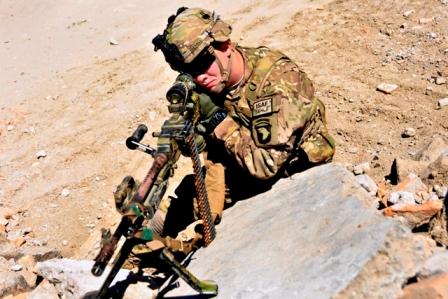
Mildot calculations, in most cases all, must be made while the scopes are at their highest power. To eliminate miscalculations, fixed scopes are used since they have a scope that is set at less than the highest power it can get. The “mil” in mildot means milliradian, not military. It’s a unit of measurement, which is around 3.6″ at 100 yards.
Many Stateside agencies that deal with law enforcement usually use variable scopes that are of the highest quality, and mildot-type reticles are not usually used.
That’s because they clutter the FOV (field of view), and the longest shots which can be taken over a street and mostly under 100 yards.
In most users’ scopes, the Mildot reticles are nothing more than an added expense and a marketing gimmick. You’ll never use them in the way that they were designed for, which is just fine. However, you can use them while outdoors to determine (hold-over) at distances accurately.
For example, when plinking or for prairie dogs, or when you just want it. The reticles in a mildot (cover) or subtend more of the target than it’s necessary. You can choose to buy what impresses you, but don’t just buy because someone else has it, or use it as the manufacturer designed it.
11. Repeatability
A good quality scope is repeatable if you can adjust the elevation and windage dials for a point of impact using one setting and move them around and shoot towards varying places. Often, it will be in a square grid and then back to the original place. The point of impact should be at the very same place you started.
Excellent scopes will move the point of impact whenever you adjust the dials without having to “settle in.” For example, if you move the elevation dial upwards three inches, the point of impact should reflect that immediately. The sad thing is that lower quality scopes can’t do that.
First, they have to shoot a few times in order to “settle in” the internal adjustments of the scope. Some users will use a cartridge case or coin to “tap” on the scope in order to assist this process. One good test of repeatability is “Shooting a Box”.
However, for some scopes, repeatability isn’t that important. In most instances, you’ll see it in a rifle and then leave it alone, except for small adjustments needed due to changes in the ammunition type. In the case, you have a .22 and only want a budget-friendly scope to top it off, you will be mostly fine without having absolute repeatability, which increases the cost of your device significantly.
12. Minute of Angle (MOA) and Turret Adjustments
Adjustments are made in (MOA) “Minutes of Angle.” It refers to a circle’s unit of measurement and is .0472 at 100 yards. However, for practical reasons, it’s called 1 inch at 100 yards, 5 inches at 500 yards, 2 inches at 200 yards, or half an inch at 50 yards.
SCOPE (ADJUSTMENTS) are usually made in A 1/4 inch (INCREMENTS) at every 100 yards. Every “click” of a windage or elevation turret will result in your point of impact moving A 1/4 inch at 100 yards. The same A 1/4 inch click will make a point of impact move 1/8 inch at 50 yards or 1/2 of an inch at 200 yards.
Some scopes feature clicks that are 1 inch or 1/2 inch. On the other hand, some types of adjustment dials do not have any clicks at all, just a (FRICTION) type of adjustment, which is (infinitely) adjustable.
If you own a scope that has A 1/4 MINUTE CLICKS and the bullet hole is at around four inches low at a hundred yards, you will have to adjust the dial towards the up” arrow’s direction on the turret 16 clicks. Remember it all depends on your bullet’s trajectory.
The turrets are located in the scope’s center, which is in a protrusion called turret housing. These turrets are sometimes designed to be turned on by a coin and are, at times finger adjustable. Target turrets are designed tall, and the clicks are easily felt and seen. They are most suited for use when they don’t get snagged on brush or gear and when they won’t get banged. It’s the reason why hunting scopes do not feature them and instead are lower profile.
Turrets are mostly sealed with an “O” ring and help prevent debris and moisture from entering the scope through the parts that are weakest. To prevent inadvertent movement, many scopes now come with large dials that have locking adjustments.
Most turrets have a way of removing or moving a turret or part of a turret to ensure it (corresponds) to zero after the user sights it with a specific load.
13. Bullet Drop Compensators (BDCs)
Reticles and BDC dials were mostly set for a few cartridges, for example, 7.62 (308) 168 grain, or 5.56 (223) 55 grain and 62 grain at the turn of the century. In terms of being accurate, they were very suspect. Atmospheric conditions varied, but BDC dials stayed the same way no matter the temperature, projectile BC (ballistic coefficient), cartridge velocity, elevation, or barrel length. They were not precise but ballpark, except on rare occasions.
In the mid-2000s, the Nikon “Spot on Technology” website entered the scene. It was my best new device at the Vegas Shot Show for that particular year and was simply fantastic. All you had to do was enter the ballistic information of any cartridge, whether handled or factory, and get the cartridge’s trajectory with any type of atmospheric condition.
People use it to determine the distances at which the Nikon BDC (reticle circles) will line up with any magnification. It also functions well with any scope from any manufacturer. You can decide to print it out for reference purposes or proceed to size it to be taped to your scope or stock for fast references in the field.
Many companies have come up with technologies with similar benefits since the “Spot On”. Some of them are quite good, while others are complicated and heavy. When it comes to rifle use, these programs are the most significant and valuable developments in decades.
They mostly cater to many hunters’ desire or ability to achieve longer shots than it could have been possible before. It matters not whether you choose to use a turret for you to adjust for distance, or utilize stadia circles or lines in your reticle.
They will be here to stay, and a lot of the guessing game is now completely gone. When used with a laser rangefinder and skill, these websites and reticles combine to ensure you feel emboldened and empowered. They assume that the user will take ethical shots while in the outdoors.
The only manner to achieve this is by burning powder with trigger time and excellent practice, not just by shooting. For more information about reticles, you should have a look at our Advanced Reticle Guide.
14. Sighting In
If you mount your scope correctly, using a bore sighter should enable you to get close enough in order to be able to print a bullet hole on a large target or object at 50 yards. Keep in mind that no laser boresighters or boresighters will sight in the gun for you.
For you to sight in, you must shoot the gun and ensure you adjust your scope accordingly, bearing in mind that every gun is an individual. It means that if a specific gun shoots well using a certain brand of ammunition, there is no guarantee that a similar gun will be like it at all. We already have a tutorial in the article How to Sight In a Scope in 7 Simple Steps
However, if you mount the best scope on a good gun with bases and rings and find a certain ammunition that shoots well, along with a bullet that serves you well, you’ll be the winner. Make sure you purchase a case with a similar shell along with the same lot number. Keep it in your gun and avoid changing anything.
It’s important that you realize that your scope will be at its best and strongest when your elevation and windage adjustments are in the center of the adjustment range available. It’s referred to as mechanical zero. When purchasing a scope, make sure you turn the dials all the way in one way and then the other.
Count how many partial and full turns you get and split the number in order to determine the middle. For your adjustments, ensure you start there. Most rear bases feature windage adjustments. Remember to use them.
15. What The Best Scope to Spend?
In my view, it’s better to have an excellent scope than a good gun. That’s because your gun will function the moment you pull the trigger, but it will be useless if you can’t view where to put the bullet. It means if you can’t rely on the bullet placement, it will be hard to target shoot or hunt.
Many people take long vacations, for example, a week or more, spend $1000.00 on a rifle and thousands more on a hunt. However, they will only buy $20.00 bases and rings along with a $150.00 scope.
The result is countless dollars wasted and lost, ruined hunting expeditions, and guns wrapped on trees because of selecting unreliable scopes. It’s better you spend $500.00 on a gun, $500.00 on a good scope with excellent bases and rings, lots of trigger time, and lots of ammunition/ammo to know your gun.
To help you have more choices about the best scope, we have the article What’s the Best Scope for the Money
Remember that during hunting expeditions, you have many things to think about, which include scent, concealment, high elevations, and even breathing, meaning you want a good gun that you understand.
Spend as much as you can on a new riflescope and less on something else or on the firearm if you have to. However, ensure you get a quality glass, that you can rely on and count on. You can choose to use a rangefinder, but for long shots, you must know and understand the trajectory of your bullet and be sure that you can place your entire shots in the crucial area of the quarry each time. Remember that for easier success, good quality glass is crucial.

[…] Illuminated Reticle […]